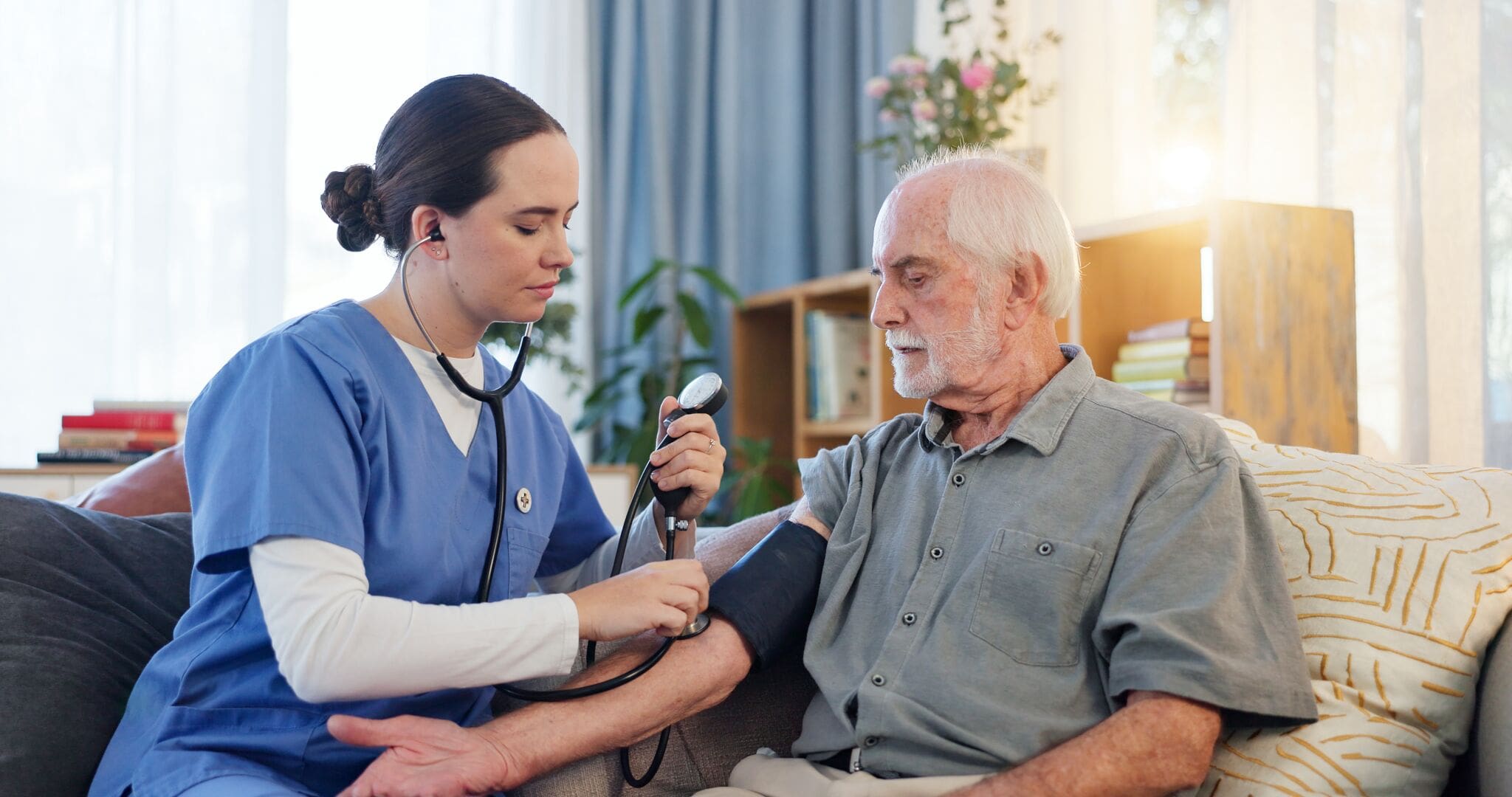In this article
Lone working is becoming more common as flexible and remote work expand across industries. According to IOSH, there are approximately eight million lone workers in the UK, making up a significant 22% of the country’s total working population. While it offers autonomy and adaptability, working alone also presents unique challenges that are often overlooked: safety risks, mental well-being concerns, and the absence of immediate support.
In this guide, we’ll examine the key aspects of lone working, from understanding what it means to work alone to identifying and assessing the key risks. We’ll explore practical safety measures, legal obligations for employers, and tips for maintaining well-being when working in isolation. Whether you’re a lone worker yourself or responsible for managing others who work alone, this guide will offer clear insights and actionable advice to help create a safer and more supportive working environment.
Who is a lone worker?
A lone worker is anyone who carries out an activity, whether full-time or part-time, in isolation from colleagues without immediate or direct supervision. This broad category encompasses a diverse range of roles across UK industries: engineers servicing remote equipment, delivery drivers on urban rounds, community nurses visiting patients in their homes, and estate agents conducting viewings alone. Even office-based staff may count as lone workers if they work outside normal hours without colleagues present. The defining element is not the location, but the absence of ready support or oversight at the time of the task.
Contexts for lone working are equally varied. In utilities, field operatives may travel alone to inspect pipelines or overhead lines. In retail, staff opening or closing shops may face theft or aggression risks. Social care professionals often enter unfamiliar environments, encountering potential hazards from environmental conditions or vulnerable clients. Academics travelling to conferences alone or IT technicians performing out-of-hours maintenance further illustrate how the practice spans sectors and settings.
Understanding who qualifies as a lone worker is the first step in protecting them. Employers must avoid the misconception that “no one else is around” equates to “no risk.” Even seemingly low-risk tasks – such as administrative work in a locked building – carry potential hazards, like medical emergencies or security breaches. Recognising the full spectrum of lone-working scenarios ensures that risk assessments, policies, and support mechanisms are comprehensive and inclusive of all affected employees.
By defining lone workers accurately, organisations can tailor safety measures to individual circumstances. A driver covering inner-city streets at night has different needs from a laboratory researcher working alone over a long weekend. Clarity over who is covered by lone-working policies helps prevent gaps in protection and ensures legal obligations under health and safety law are met.

Key Risks Associated with Lone Working
Lone working amplifies many common workplace hazards by removing the immediate support network that colleagues provide. One of the most serious risks is violence or aggression. Employees in retail, social work, or community care may face confrontational situations with members of the public. Without a colleague nearby, the lone worker’s ability to call for help or retreat is severely limited, increasing the likelihood of harm.
Another critical risk is isolation in medical emergencies. A lone technician suffering a cardiac event or a slip-and-fall injury in a remote location may be unable to summon assistance promptly. Delays in first aid can exacerbate injuries or, in extreme cases, prove fatal. Even in urban settings, a lone worker discovering structural damage in a building or a gas leak may lack the immediate backup necessary to contain the hazard safely.
Environmental hazards also pose a heightened threat. Field operatives working at height, in confined spaces, or in extreme weather conditions face elevated danger when unsupervised. The absence of a partner to monitor conditions, hold safety lines, or conduct rescue operations increases the severity of potential incidents. Similarly, driving roles introduce road traffic risks; without a co-driver or dispatcher regularly checking in, incidents such as road collisions or vehicle breakdowns can escalate quickly.
Psychosocial risks are often overlooked but can be as damaging as physical hazards. Loneliness, stress, and anxiety may intensify when employees have no peer support to discuss workload pressures or challenging interactions. Extended periods of solitary work can erode mental well-being, leading to burnout or reduced ability to make safe decisions. A holistic risk assessment must therefore encompass both the tangible physical threats and the less obvious psychological impacts of lone working.
UK Legal Obligations for Lone Worker Safety
Under the Health and Safety at Work, etc. Act 1974, employers have a primary duty to ensure, so far as reasonably practicable, the health, safety and welfare at work of all their employees – including those working alone. This duty is reinforced by the Management of Health and Safety at Work Regulations 1999, which require a suitable and sufficient risk assessment and the implementation of measures to eliminate or control risks. Employers must tailor these obligations specifically to lone-working scenarios, recognising that the absence of immediate assistance magnifies every hazard.
The Health and Safety Executive (“HSE”) provides detailed guidance on managing lone working, emphasising that no industry is exempt from these responsibilities. Organisations must ensure that lone-worker risks are not treated as a lesser priority simply because they lack a co-worker presence. Failure to comply can result in enforcement actions ranging from improvement notices to prosecution and fines – penalties that have both financial and reputational consequences.
In addition to general health and safety law, certain sectors face bespoke requirements. Social care providers must adhere to Care Quality Commission standards for staff safety during home visits. Transport operators must integrate lone-worker provisions into driver hours regulations. Even where no sector-specific legislation applies, the overarching principle remains: employers must identify hazards, assess the risks for lone workers, and introduce proportionate controls to safeguard their welfare.
Regular review of policies and risk assessments is also a legal expectation. Changes in working practices – new technology, altered shift patterns, or service expansions – demand fresh evaluations of lone-worker arrangements. By embedding legal obligations into ongoing management systems, organisations demonstrate due diligence and reduce the likelihood of regulatory intervention or civil liability.
Conducting a Lone Worker Risk Assessment
A robust risk assessment is the cornerstone of effective lone-worker protection. The process begins with hazard identification: mapping every task undertaken by lone workers and pinpointing potential sources of harm. This may involve site visits, employee interviews, and consultation with supervisors to capture real-world insights into operational challenges.
Once hazards are catalogued, the next step is risk evaluation – analysing the likelihood and severity of harm, such as accidents and injuries, in the absence of colleague support. Employers should use a consistent scoring method to prioritise risks, focusing first on those with high probability and critical consequences, such as medical incidents or violent confrontations.
Recording the findings in writing fulfills a regulatory requirement and serves as a reference for designing controls. The HSE risk assessment guidance provides templates and best-practice advice on documenting assessments clearly and comprehensively. Including details such as location, task description, identified hazards, and chosen control measures ensures that the rationale for decisions is transparent and auditable.
Risk assessments must be regularly reviewed and updated. Any accident, incident, near-miss, or change in circumstances, e.g., new equipment, revised working hours, or intelligence on emerging threats, warrants a fresh look at the control measures. Engaging lone workers in this review process not only taps into frontline expertise but also fosters a culture of shared responsibility for safety.
Developing Safe Systems of Work
Safe systems of work translate risk assessment findings into practical procedures that protect lone workers. These systems define how tasks should be performed, the equipment to be used, and the supervision or contact arrangements required. For example, maintenance operatives working at height may operate under a permit-to-work system that specifies harnessing, tool tethering, and pre-task checks.
Procedures should be detailed yet flexible enough to accommodate unexpected changes. A delivery driver’s route plan might set out an approved sequence of stops and rest breaks, while also providing clear steps for handling unplanned diversions or vehicle breakdowns. Embedding risk control measures into standard operating procedures ensures consistency and simplifies training.
Where applicable, employers can draw on the Health and Safety Executive guidance on lone working to shape safe-system frameworks. Key elements include defining roles and responsibilities, establishing approval mechanisms for high-risk tasks, and detailing emergency contacts. Written procedures must be accessible to all lone workers – whether via printed manuals or mobile applications – and subject to periodic audit to confirm adherence.
Engaging supervisors in developing and testing safe systems ensures that procedures are realistic and workable. Trial runs or tabletop exercises can highlight gaps or ambiguities before they lead to incidents. By integrating safe-system design with frontline feedback, organisations create practical controls that balance safety with operational efficiency.
Communication Protocols and Check-In Procedures
Maintaining contact with lone workers is vital both for routine reassurance and emergency response. Communication protocols should specify minimum check-in frequencies, preferred methods (such as phone calls, text messages, or mobile app alerts), and escalation procedures if contact fails. For higher-risk assignments, continuous monitoring via GPS-enabled devices or two-way radios may be appropriate.
Check-in procedures must be unambiguous. A building inspector, for example, might be required to call the office on arrival, at mid-visit, and upon departure. If a scheduled check fails, the protocol dictates that a supervisor attempts immediate contact and, failing that, initiates a welfare check at the worker’s last known location. Documenting these steps and the responsible person for each action ensures rapid and coordinated responses.
Technology can enhance communication reliability. Smartphone apps designed for lone-worker safety offer automated check-in reminders, location tracking, and “man-down” detection, reducing reliance on manual calls. However, employers must ensure that devices function in the environments where workers operate – checking signal coverage in remote areas or secure zones before deployment.
Training in communication protocols is as critical as the protocols themselves. Lone workers should understand exactly how and when to check in, and supervisors must be clear on their responsibilities when a check fails. Regular drills reinforce familiarity, helping to avoid confusion during genuine emergencies.
Emergency Planning and Incident Response
Even with thorough risk assessments and robust communication systems, emergencies can occur. A structured incident response plan defines how the organisation will react, minimising confusion when every second counts. Key elements include clear roles, such as incident commander, communications lead, technical advisor, and an incident escalation matrix that outlines decision-making authority at each severity level.
Emergency plans should cover likely scenarios identified in the risk assessment: medical emergencies, violent intrusions, fires, or environmental hazards. For each, the plan details immediate actions (first-aid provision, scene evacuation, law enforcement liaison), communication flows (who informs whom and how), and post-incident procedures (investigation, reporting, debriefing).
Employers must ensure compliance with first aid at work requirements, including the availability of trained first-aiders and appropriate equipment. In remote situations, plans may involve arranging rapid external medical support or training lone workers in basic first-aid techniques. Simulated drills, such as mock abduction scenarios for high-risk roles, test the plan’s robustness and highlight areas for refinement.
After an incident, a thorough debrief captures lessons learned. The organisation should revise risk assessments, safe systems, and communication protocols based on real-world experience. By viewing incidents as opportunities for improvement rather than mere failures, businesses strengthen their long-term lone-worker safety framework.
Use of Personal Safety Devices and Technology
Advancements in personal safety technology offer powerful tools to protect lone workers. Lone-worker apps on smartphones can trigger alarms if a worker fails to check in or if the device senses a sudden fall. Standalone devices – such as panic buttons worn as pendants or badges – provide discreet emergency activation, instantly alerting monitoring centres or supervisors to a worker’s plight.
GPS tracking devices help to pinpoint a lone worker’s location in real time, crucial during medical emergencies or security incidents. Geofencing features can automatically alert managers when a worker enters or leaves designated safe zones. However, the introduction of tracking raises privacy considerations; employers must balance safety benefits with transparency about how location data are collected, stored, and used.
Other technological aids include body-worn cameras, which deter aggression and provide evidence if confrontations occur. Environmental sensors can monitor air quality or detect hazardous gases in confined spaces, linking automatically to alarm systems. When selecting technology, organisations should evaluate factors such as battery life, ruggedness, ease of use, and integration with existing communication infrastructures.
Implementing technology requires more than procurement. Clear policies must govern device usage, data retention, and response workflows. Training ensures that lone workers know how to operate devices correctly, charge batteries, test functionality, and report malfunctions. By embedding technology into broader safety management systems, employers can enhance protection without creating fragmented controls.
Training Requirements for Lone Workers
Training equips lone workers with the skills and knowledge to manage risks independently. Core training modules typically cover hazard awareness, emergency procedures, communication protocols, and basic first aid. Role-specific training might include manual handling techniques for home carers, defensive driving courses for delivery drivers, or working-at-height instruction for maintenance personnel.
To ensure training consistency and credibility, many organisations partner with accredited providers, such as the Institution of Occupational Safety and Health (IOSH). Certification schemes – like IOSH’s “Working Safely” course – offer recognised qualifications that demonstrate competence to regulators and insurers alike. Refresher training at regular intervals reinforces learning and updates workers on changes in procedures or legislation.
Interactive delivery methods – such as scenario-based e-learning, workshops, and peer discussions – tend to be more effective than one-way lectures. Role plays simulating aggressive encounters or equipment failures help lone workers rehearse appropriate responses. Employers should track training completion, evaluate its impact through assessments or drills, and adjust content based on feedback and incident records.
Robust training programmes not only satisfy legal duties but also build confidence among lone workers. When employees understand the rationale behind procedures, rather than seeing them as boxes to tick, they are more likely to follow safety measures diligently, reducing the risk of incidents.
Mental Health and Wellbeing Considerations
Lone working can take a toll on mental health. The absence of social interaction, compounded by high-pressure situations or exposure to traumatic events, may lead to anxiety, depression, or burnout. Employers must address these psychosocial hazards as diligently as physical ones, recognising that mental well-being is integral to overall safety.
Regular welfare checks – beyond operational check-ins – offer opportunities for supervisors to listen to concerns, provide encouragement, and spot signs of distress. Confidential counselling services or employee assistance programmes give individuals a private outlet for discussing pressures that may otherwise go unreported. Promoting a culture where mental health is openly discussed reduces stigma and encourages early intervention.
Training should include resilience and stress-management techniques, helping lone workers develop coping strategies for isolation or challenging encounters. Peer-support networks, whether virtual forums or regional meet-ups, allow employees to share experiences and solutions. By embedding mental well-being into lone-worker policies, organisations demonstrate holistic care, which in turn enhances engagement and reduces absenteeism.
Working Alone at Night or in High-Risk Locations
Night-time lone working and assignments in inherently dangerous environments – such as construction sites, derelict buildings, or high-crime areas – present elevated risks. In low-light conditions, visibility hazards multiply; slips, trips, or falls may go unnoticed, and lone workers can become more vulnerable to aggression. Security measures, such as improved lighting, secure perimeters, and CCTV surveillance, mitigate some dangers but do not eliminate the need for personal safeguards.
Operating in high-risk locations often necessitates enhanced controls. Employers may require two-person teams for certain sites or implement stricter check-in intervals. Access control systems, such as swipe cards or biometric locks, prevent unauthorised entry and provide precise logs of worker movements. Prior to deployment, site-specific briefings should highlight unique hazards, escape routes, and local emergency contacts.
Transport to and from these locations also demands consideration. Employers should plan safe parking areas, provide escort services where feasible, and ensure vehicles are maintained to withstand adverse conditions. For remote sites without reliable mobile coverage, satellite communication devices or radio systems become indispensable. By tailoring risk assessments and controls to the time of day and location context, organisations can protect lone workers in the most challenging environments.

Case Studies: Lessons from Real Incidents
Real-world incidents underscore the importance of proactive lone-worker safety measures. In one documented case, a social worker visiting a client’s home was attacked after failing to follow check-in procedures; the absence of routine call-backs allowed the situation to escalate without detection. A subsequent investigation revealed that ambiguous communication protocols and a lack of panic-button devices were the root causes. The employer overhauled check-in schedules, adopted GPS-monitored devices, and retrained staff – measures that eliminated similar incidents in the following two years.
Another example involves a utility engineer injured after slipping in a confined space. Although trained in safe entry procedures, the worker’s alarm device had not been maintained and failed to signal distress. The organisation responded by instituting mandatory device testing before each solo assignment, tracking battery health via a central dashboard, and introducing monthly rescue drills. This dual focus on equipment reliability and emergency preparedness became a model for other branches.
These case studies highlight common themes: incomplete risk assessments, technology gaps, and insufficient training. By analysing incidents candidly, organisations can transform mistakes into learning opportunities. Documenting case-study findings in internal bulletins or toolbox talks keeps lessons alive and prevents complacency over time.
Industry-Specific Lone Working Challenges
While the fundamental principles of lone-worker safety apply universally, each sector faces unique challenges. In healthcare, practitioners encounter vulnerable patients, unpredictable behaviours, and infection risks. Rapidly changing home environments demand flexible risk controls and robust PPE protocols. In contrast, transport workers contend with road traffic hazards, extended hours behind the wheel, and pressures to meet tight delivery schedules.
Construction and engineering sectors often deal with dynamic sites where structural changes occur daily. Rubber-stamped permits and pre-task briefs ensure that each visit is re-evaluated for new risks. Retail and hospitality workers opening or closing premises must balance customer service duties with theft-prevention measures, sometimes amid darkened streets and constrained staffing levels.
Understanding sector nuances allows employers to customise policies, equipment lists, and training modules. Grouping similar roles – such as field service engineers across utilities – and sharing best practices fosters cross-industry learning. Sector associations frequently publish tailored guidance; participating in these forums keeps organisations abreast of emerging threats and innovative solutions.
Policies and Documentation Best Practice
Well-crafted policies provide the backbone for consistent lone-worker management. A standalone lone-worker safety policy should define scope, responsibilities, procedures for hazard identification, communication protocols, and training requirements. Embedding references to related policies – such as first-aid, mental health, travel and expense, or IT security – ensures a cohesive framework.
Documentation must be controlled and versioned. Online policy portals allow instant access to the latest procedures, while outdated print copies are removed from circulation. Simple flowcharts summarising check-in processes or escalation paths aid comprehension, particularly in high-stress scenarios. Standard templates for risk assessments, incident reports, and training records streamline compliance and facilitate audits.
Regular policy reviews – annually or following significant incidents – guarantee continued relevance. Stakeholder consultation, including feedback from lone workers themselves, helps to surface real-world concerns and reinforces buy-in. Clear authorisation hierarchies and document-control registers demonstrate accountability and satisfy regulatory expectations.
Monitoring and Continuous Improvement
Lone-worker safety demands ongoing vigilance. Key performance indicators – such as incident rates, missed check-ins, device malfunctions, and training completion percentages – provide quantitative insights into system health. Dashboards aggregating these metrics enable managers to spot trends early, for example, rising incidents on specific sites or recurrent communication failures during night shifts.
Qualitative feedback complements numbers. Post-incident debriefs, anonymous surveys, and focus groups with lone workers reveal latent issues that metrics alone might miss. Perhaps communication protocols are too complex, or training scenarios feel unrealistic. Addressing such feedback promptly maintains trust and prevents small frustrations from snowballing into systemic risks.
Continuous improvement cycles mirror the Plan-Do-Check-Act model: plan new controls or process enhancements, implement them on a trial basis, check their effectiveness through audits and worker feedback, then act to standardise successful changes. By embedding this cycle into management reviews, organisations ensure that lone-worker safety evolves alongside operational, technological, and regulatory developments.
The Role of Supervisors and Line Managers
Supervisors and line managers play a central role in lone-worker frameworks. They allocate resources, enforce procedures, and serve as first responders when alerts or incidents arise. Effective managers cultivate open communication, encouraging lone workers to raise concerns without fear of blame or reprisal. This psychological safety fosters early reporting of near-misses, enabling preventive action before more serious events occur.
Supervisors also monitor compliance with training and equipment-checking schedules, conducting spot checks on device functionality and observing adherence to safe systems of work. Regular one-to-one meetings offer opportunities to discuss individual challenges – perhaps signal blackspots on routine routes or personal stressors affecting performance. Documenting these interactions in brief supervisory logs creates an audit trail and ensures issues are not overlooked.
Crucially, line managers champion continuous improvement. By analysing incident data, gathering insights from frontline staff, and piloting innovative solutions, they embed a proactive mindset. Visible leadership – such as accompanying a lone worker on a field visit – demonstrates commitment to safety from the top down, reinforcing that no operational target justifies compromising welfare.

Employee Rights and Reporting Concerns
Lone workers have a right to work in an environment where risks are managed effectively. They may refuse tasks they reasonably believe present serious danger and should never face detriment for raising safety concerns. Employers must publicise grievance and whistleblowing procedures, ensuring that individuals can report hazards or policy breaches confidentially if necessary.
In addition to internal channels, employees can seek guidance or lodge complaints with the Health and Safety Executive if they feel their employer is not fulfilling legal duties. Workers’ representatives, such as trade unions or elected safety champions, also play an important advocacy role, liaising with management to address systemic issues. Protecting and promoting these rights ensures that lone-worker safety remains a shared priority, underpinned by transparency and mutual respect.
Conclusion
By systematically defining lone-worker roles, assessing and controlling risks, leveraging technology, and fostering a culture of continuous improvement, UK employers can fulfil their legal duties and protect the well-being of employees who work alone. Robust policies, clear communication, targeted training, and empathetic management together form a resilient framework, ensuring that lone working remains a viable and safe way of delivering essential services across diverse sectors.






